Hello people! Welcome to another post of mine. Today we'll be looking into the mysterious world of the Crab Spider.
I'm sure you haven't forgotten those cuties from yesterday photo-post:
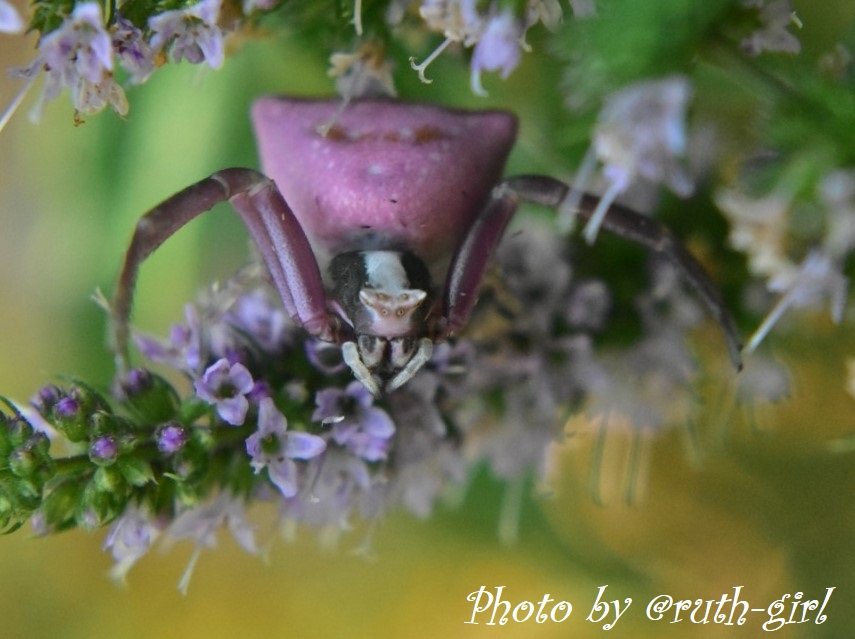
and...
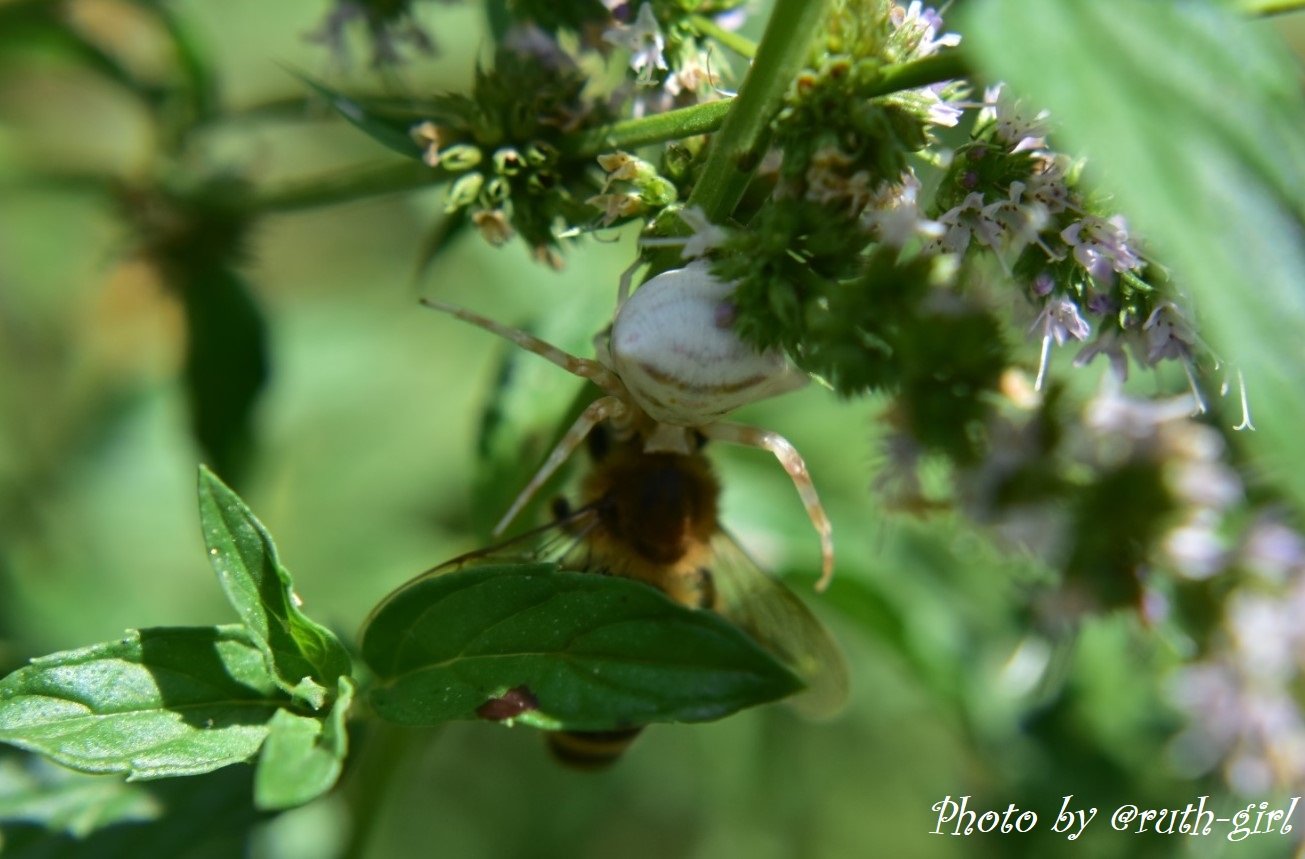
Those sweet nightmarish creatures belong to the Thomisus genus of the Thomisidae family and they are officially called Thomisus Onustus. The pink and white cuties above are girls and remember this tiny, orange fellow I showed you? [1]
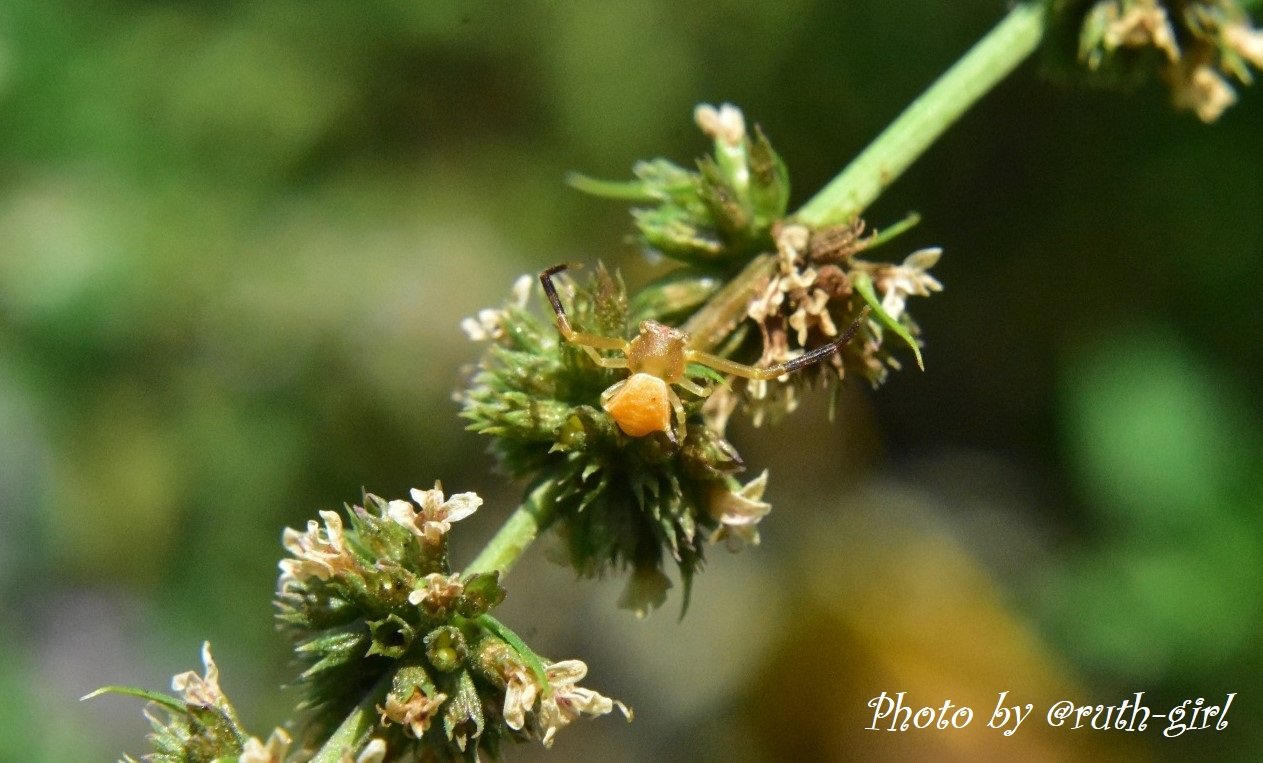
Yeah, that's a boy. Sexual dimorphism in the species makes the females differ in size from the males. The adult ladies are usually bigger than the gents. They can reach up to 6-7 mm in length, while the males' bodies are 2-4 mm long. It seems like I was wrong when I told you that the orange fellow was a "toddler", he was just a poor, small male, jumping from flower to flower in order to avoid his wife's whining! [1]
Dimorphism applies to the color of the spiders as well, with white, pink or a pale brownish shade for the females (sometimes they may have some red spots too). The males may have a yellow brown to dark brown prosoma (head and thorax), while their abdomen, the opisthosoma may be yellow and green or brown. [1]
But other than the size and colors, female and male bodies are pretty much the same in shape, with the female opistosoma ending in a more pointed, "triangle-like" shape. Nevertheless, both males and females have a longer, compared to the rest, front pair of legs (allowing them to pose like kung-fu warriors, see the photo below).
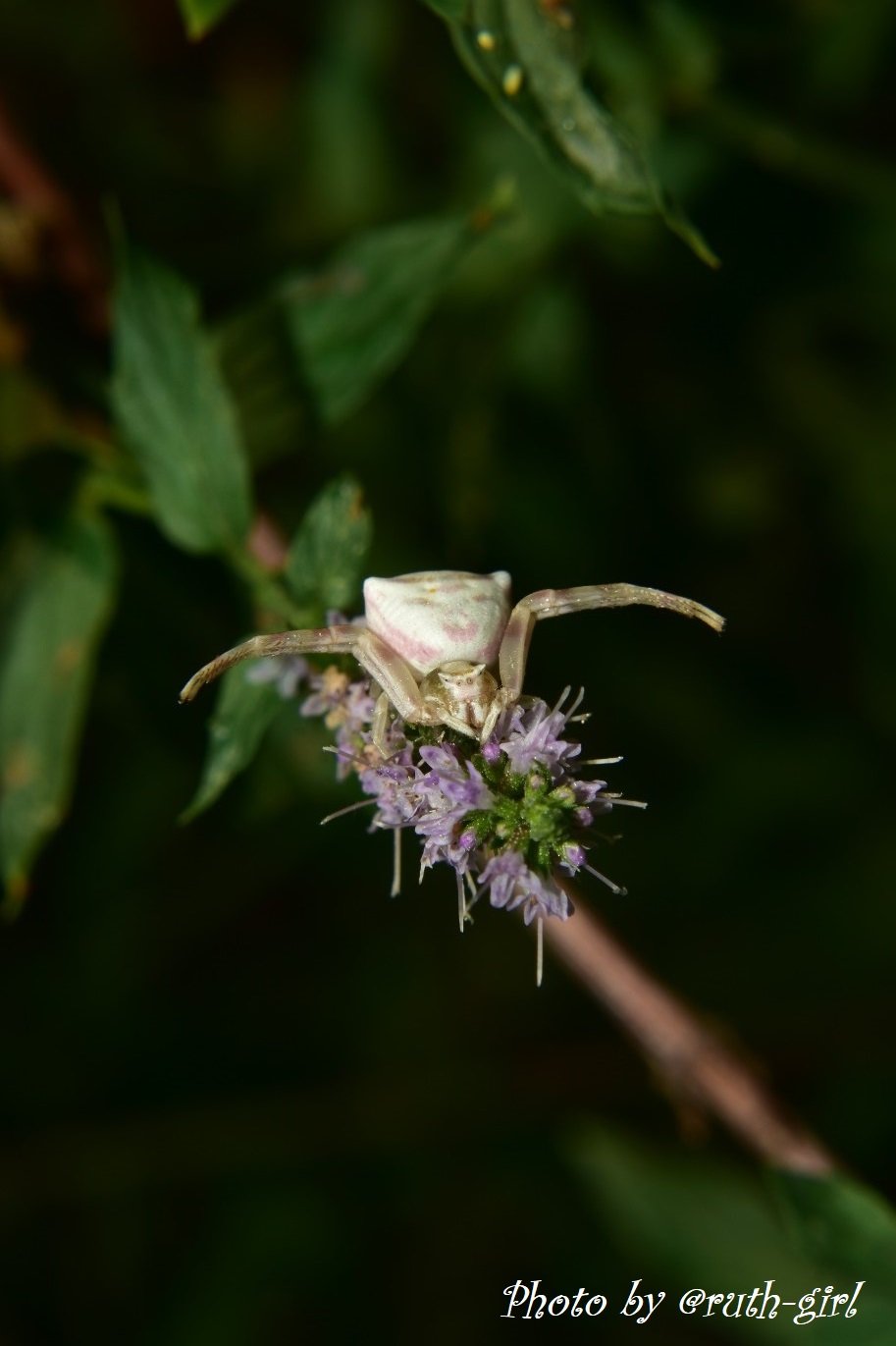
What do they eat?
Well, those spiders don't build webs, like most of the spiders in the Thomisidae family. They lurk hidden between flowers and prey on pollinators like:
bees...
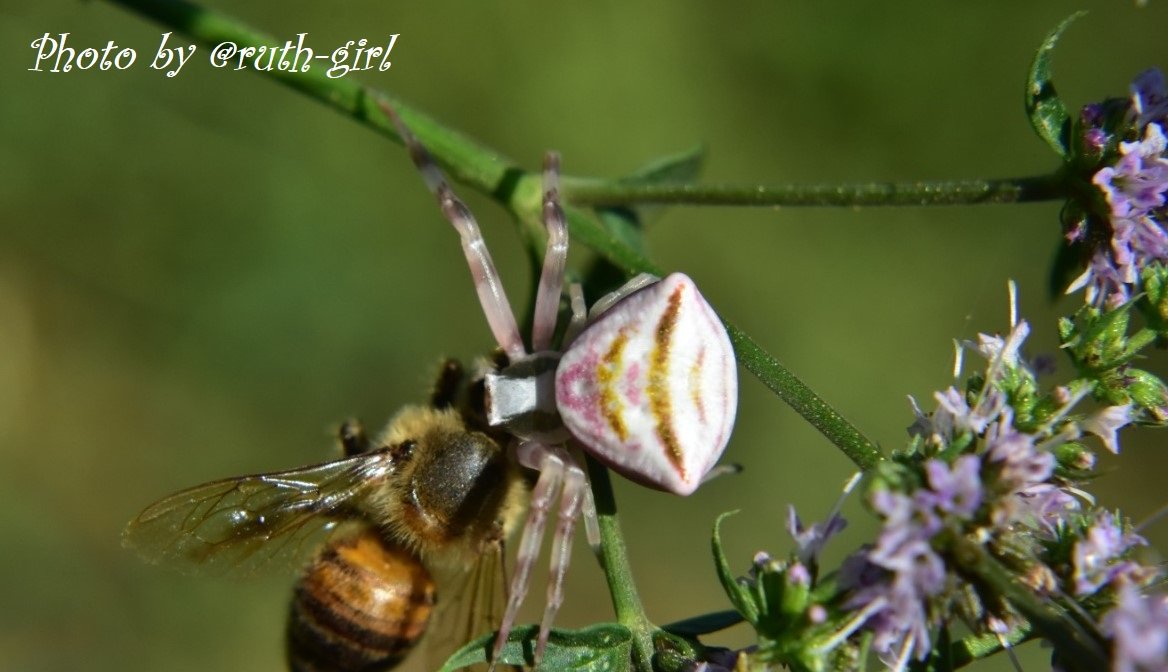
wasps...
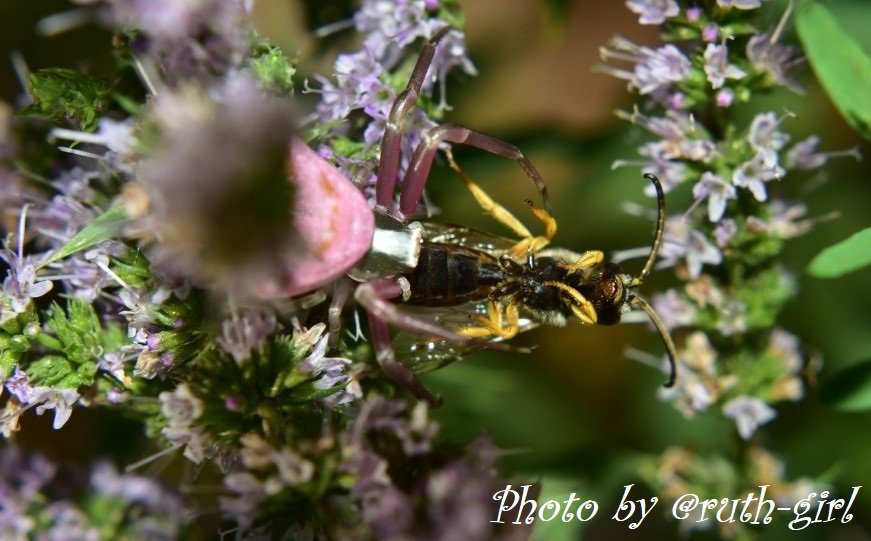
... butterflies, hover flies and beetles. A study suggested that Thomisus Onustus spiders may also feed on worker ants, but in very low percentages compared to other insects. You can see that their prey sometimes may be significantly larger than the spider itself. But with the help of their strong front legs, they hold the heavy prey very tight while their fangs pierce the poor insect's flesh. [1, 3]
When do they have babies?
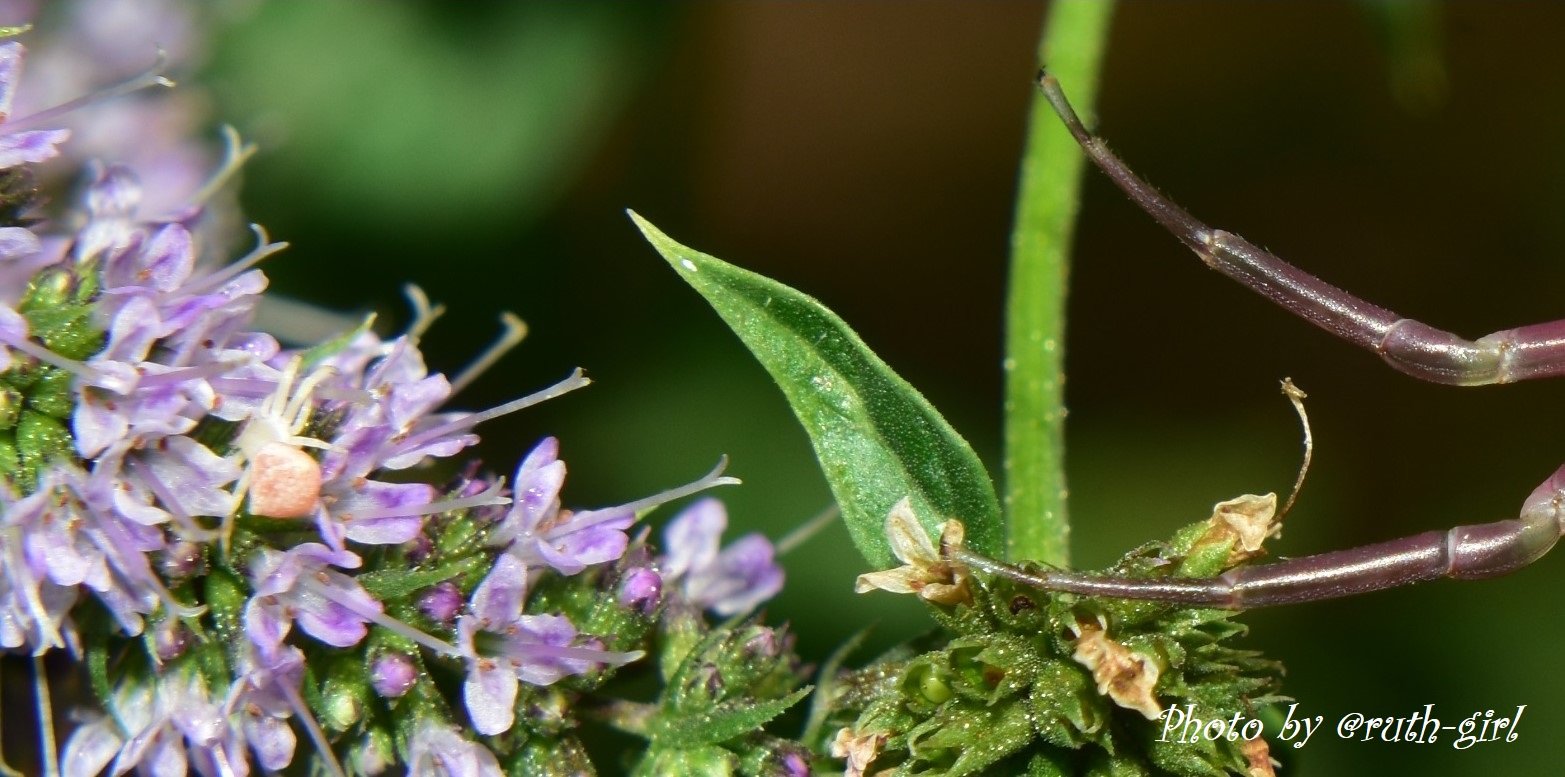
Crab spider babies are products of summer love! The male and female mate usually in June and unlike the deadly Black Widow, the Pink Crab Spider is very obedient and not at all aggressive. (Since the spiders get their eggs fertilized in June, I don't wonder why I found this little baby a couple of days ago in my garden.) [1]
The females live for up to 2 years. When they reach their final days, they can fulfill their mission in this life, which is to make sure the species survives. In order to increase the chances of success, the females make 2-4 egg sacs, which hatch in different times (how cool is that?!). The sac weaved earlier will hatch in late summer, the hatchlings will feed on insect prey and then hibernate hidden in the plants for the whole winter. That's for the first sac, but what happens to the last one? It seems that the last sac weaved remains unhatched until early springtime comes. [2]
But in early springtime food is scarce and the young spiderlings may die of starvation (how sad is that?). Don't worry, mother nature has got them all covered. When the young spiders can't find insects to feed on, they can survive and get all the necessary nutrients from pollen and nectar. (These are findings of a lab experiment, where fertilized spiders gave birth to spiderlings kept in captivity for the sake of the study) [2]
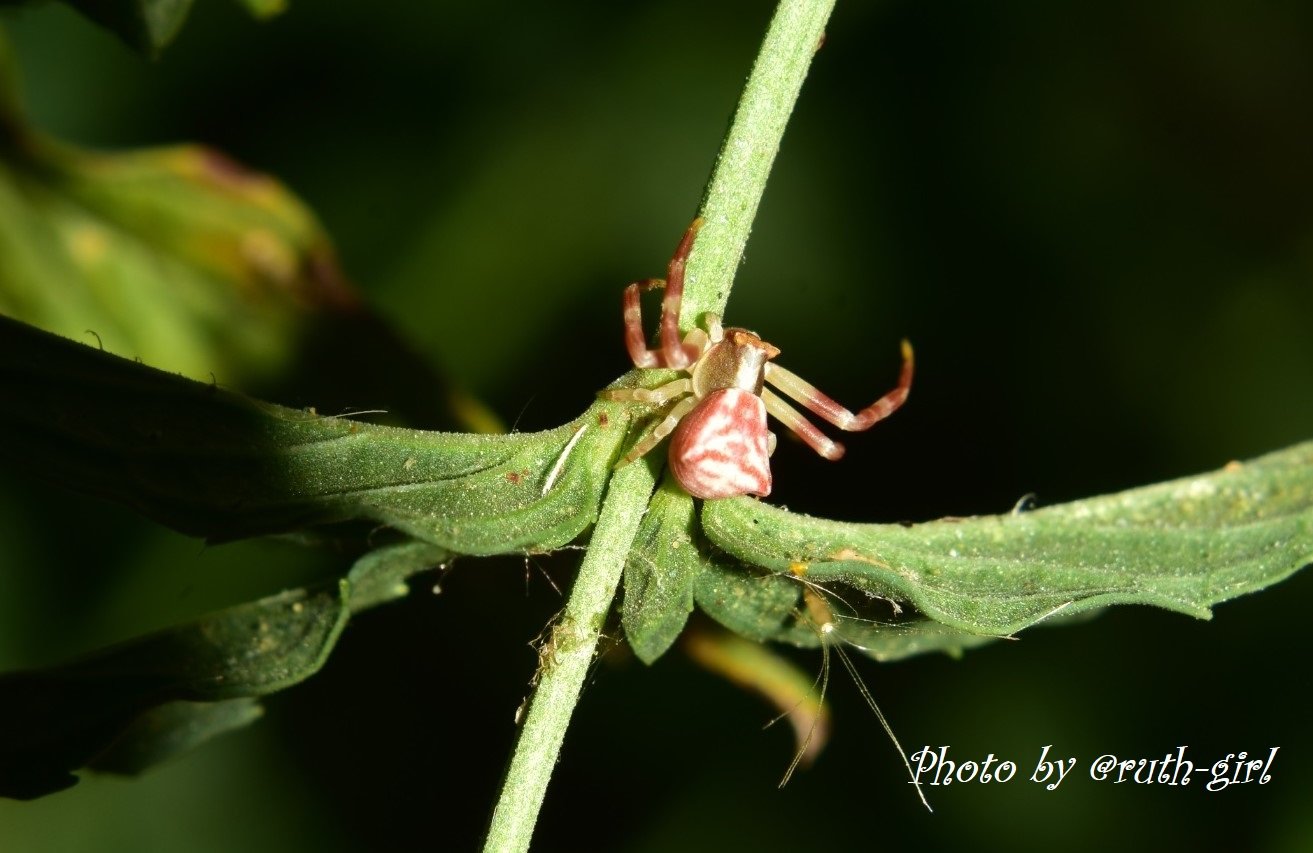
It's just incredible what one can find in their garden. Over the last couple of days I have spotted this spider species, along with a few other ones that I still haven't had the time to look up (actually have @trumpman look them up for me). I took photos of some cute, small, silver bees (yes, they are smaller than the regular yellow bees we see). I also found some other tiny monsters of the macro world that I'm going to share in a few posts over time.
Perhaps you should take a walk in your garden and see what you will find. Spend some time among your plants, look and look closer. Allow your eyes to get used to the colors, shapes and shades of the leaves and flowers and then you will definitely spot a creature worth finding out more about! (At least that's what I do these days and I can combine my new hobby, photography, with some educational googling).
References
[1] wikipedia.org-Thomisus_onustus
[2] link.springer.com
[3] researchgate.net
*All images (not free for re-use) and video by @ruth-girl - Steemit, 2018
(Images taken with Nikon D3400 - AF-P NIKORR 18-55 mm)

Thank you so much for your time!
Until my next post,
Steem on and keep smiling, people!



